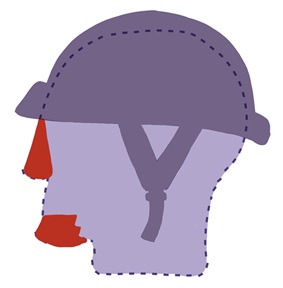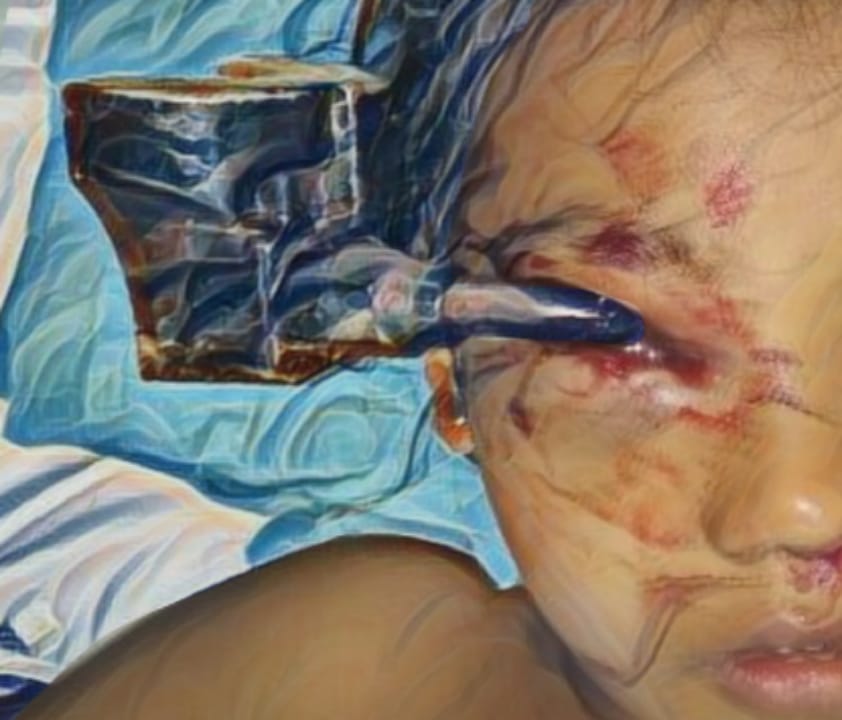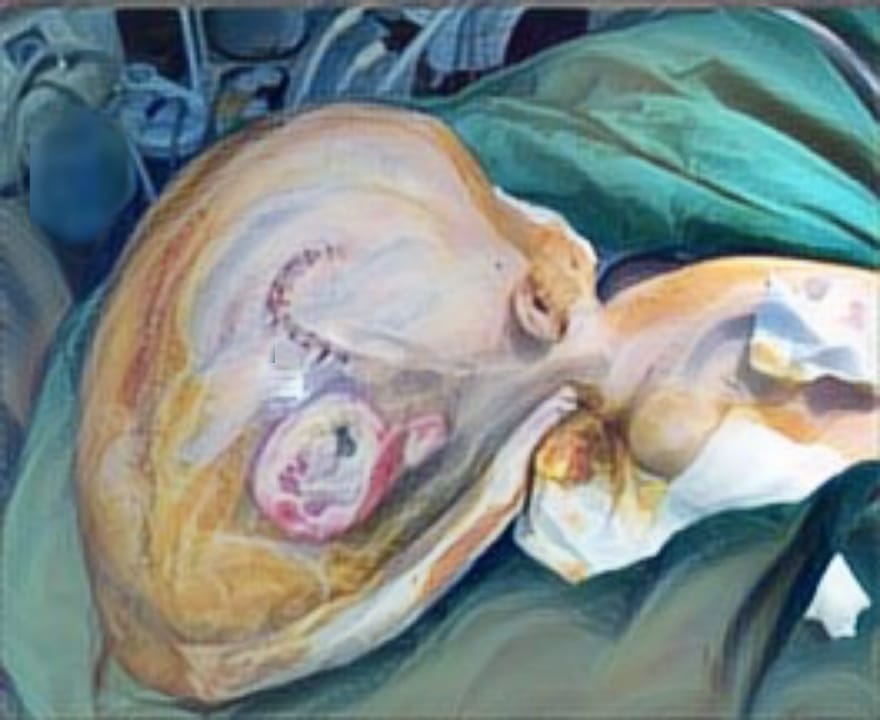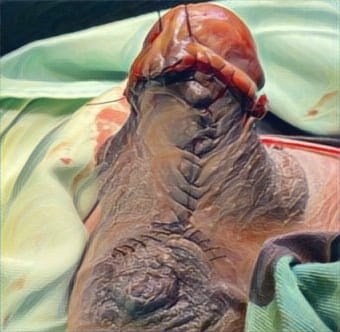ASSESSMENT OF MAXILLOFACIAL TRAUMA IN KANJURUHAN GENERAL HOSPITAL MALANG USING FACIAL INJURY SEVERITY SCALE (FISS) SCORING SYSTEM

Downloads
Highlights:
- Most maxillofacial trauma cases were mild, based on FISS scoring.
- The average FISS score was 3.37, with most patients scoring 2 (24.7%).
- Larger studies are needed to confirm FISS as a prognostic tool.
Abstract:
Introduction: Maxillofacial trauma is a unique form of trauma that may lead to various facial function disabilities. One method to assess the severity of maxillofacial fractures is the Facial Injury Severity Scale (FISS). This study aims to describe and evaluate the severity of maxillofacial trauma cases in the Emergency Room of Kanjuruhan General Hospital Malang using the FISS scoring system, from January 2022 to December 2023.
Methods: This retrospective study collected data from patients with maxillofacial trauma treated at the Emergency Room of Kanjuruhan General Hospital Malang between January 2022 and December 2023. The variables recorded included age, gender, etiology, helmet use, type of fracture, and treatment received. Each patient was evaluated using the FISS scoring system to determine the severity level.
Results: A total of 73 subjects were included. The youngest patient was 2 years old, and the oldest was 76 years. The average FISS score was 3.37 ± 1.9, with scores ranging from 1 to 9. Most patients had a FISS score of 2 (24.7%).
Conclusion: The majority of maxillofacial trauma cases in the Emergency Room of Kanjuruhan General Hospital were classified as mild according to the FISS scoring system. Further studies with a larger sample size and a complete maxillofacial trauma database are needed to evaluate the prognostic value of the FISS system.
Sehat M, Naieni KH, Asadi-Lari M, Foroushani AR & Malek-Afzali H. Socioeconomic status and incidence of traffic accidents in metropolitan tehran: A population-based study. Int J Prev Med. 2012;3(3):181-90.PMid: 22448311.
Ardian S, Harmas YY & Eka MO. Overview Facial Injury Severity Scale (FISS) Scores in Maxillofacial Trauma Patients at the ER Hasan Sadikin Hospital Bandung Period January – December 2021. Int J of Medical and Biomedical Studies. 2022; 6(11):36-40. DOI:10.32553/ ijmbs.v6i11.2701
Kusumastutie NS, Patria B, Kusrohmaniah S & Hastjarjo TD. A review of accident data for traffic safety studies in Indonesia. In IOP Conference Series: Earth and Environmental Science. IOP Publishing. 2024; 1294(1): 012012. DOI: 10.1088/1755-1315/1294/1/0120 12
World Health Organization, Global Status Report On Road Safety 2018. Geneva: World Health Organization, 2018.
Tana L, Delima D, Kusumawardani N & Indrawati L. Helmet use behavior and its relation to head injury of road traffic accident in Indonesia (Basic Health Research, 2018). Health science journal of Indonesia, 2021; 12(1): 56-65. DOI: 10.22 435/hsji.v12i1.4655
Badan Pusat Statistik, “Jumlah Kecelakaan, Korban Mati, Luka Berat, Luka Ringan, dan Kerugian Materi 1992-1994,” 2023. https://bps.go.id/indicator/17/513/10/jumlah-kecelakaankorban-mati-luka-berat-luka-ringan-dan-kerugian-materi.html (accessed Jul. 10, 2023).
Korlantas RI. Data Statistik Kecelakaan Lalu Lintas Triwulan Terakhir Tahun 2021. 2021.
Badan Pusat Statistik (BPS). Rekapitulasi Data Kecelakaan Lalu Lintas 2012 – 2019. 2020.
Laureshyn A & Varhelyi A. “The Swedish Traffic Conflict Technique Observer’s Manual.” Lund University, Lund, 2018.
Ahmed A, Sadullah AFM & Yahya AS. Errors in accident data, its types, causes and methods of rectification-analysis of the literature. Accident Analysis & Prevention. 2019; 130 (1):3–21. DOI: 10.1016/j.aap. 2017. 07.018.
The Indonesia Family Life Survey, “The Indonesia Family Life Survey (IFLS),” 2023. https://www.rand.org/well-being/social-and-behavioral-policy/data/FLS/IFLS.html (accessed Jul. 10, 2023).
Kamaluddin NA, Andersen CS, Larsen MK, Meltofte KR & Várhelyi A. Self-reporting traffic crashes: a systematic literature review. European Transport Research Review. 2018;10(26):1–18.DOI: 10.1186/ s12544-018-0301-0.
Yembise TL & Bolly HMB. Helmet use compliance survey for craniofacial trauma prevention among motorcyclists in Jayapura City Ring Road. Jurnal Rekonstruksi dan Estetik. 2024;9(2):132–143. DOI: 10.20473/jre.v9i2.64397.
Putri SNV, Fauzi AR, Paramita DK, Dachlan I & Seswandhana R. Maxillofacial trauma severity effects in patients with head injury in a tertiary care center in Yogyakarta, Indonesia. European Journal of Plastic Surgery. 2022;45(3):393–398. DOI:10.1007/s00238-021-01 904-3
Melek LN & Sharara AA. Retrospective study of maxillofacial trauma in Alexandria University: analysis of 177 cases. Tanta Dental Journal. 2016; 13(1): 28–33. DOI:10.4103/1687-8574. 186943
Tana L & Delima D. Helmet use behavior and its relation to head injury of road traffic accident in Indonesia (Basic Health Research, 2018). Health Science Journal of Indonesia. 2021; 12(1): 56–65. DOI:10.22435/hsji.v12i1.4655
Anwar MAF, Atmoko WD & Wujoso H. Gambaran trauma kepala korban mati kecelakaan lalu lintas yang ditangani instalasi forensik RSUD Dr. Moewardi tahun 2017–2022. Plexus Medical Journal. 2024;3(1):8–15. DOI: 10.20961/plexus. v3i1.1026.
Kristanto E, Mallo JF & Yudhistira A. Cedera akibat kecelakaan lalu lintas di Kota Manado. Jurnal Biomedik (JBM). 2009;1(3). DOI:10.35790/jbm.1.3.2009. 833.
Faried A, Bachani AM, Sendjaja AN, Hung YW & Arifin MZ. Characteristics of moderate and severe traumatic brain injury of motorcycle crashes in Bandung, Indonesia. World Neurosurgery. 2017;100:195–200. DOI:10.1016/ j.wneu. 2016.12.133
Dadkhah A, Saied-Moallemi Z & Alem-Rajabi MS. Head and face injuries and helmet use among injured motorcyclists with road accidents in Isfahan, Iran. Journal of Oral Health and Oral Epidemiology. 2015. 4(2):80-86.
Ruslin M, Brucoli M, Boffano P, Benech A, Dediol E, Uglešić V, et al. Motor vehicle accidents–related maxillofacial injuries: a multicentre and prospective study. Oral surgery, oral medicine, oral pathology and oral radiology. 2019; 128(3): 199-204. DOI:10.1016/j.oooo.2018.12.009
Bagheri SC, Dierks EJ, Kademani D, Holmgren E, Bell RB, Hommer L & Potter BE. Application of a facial injury severity scale in craniomaxillofacial trauma. Journal of oral and maxillofacial surgery. 2006; 64(3): 408-414. DOI:10.1016/ j.joms.2005.11.013
Michalik W, Toppich J, Łuksza A, Bargiel J, Gąsiorowski K, Marecik T, et al. Exploring the correlation of epidemiological and clinical factors with facial injury severity scores in maxillofacial trauma: a comprehensive analysis. Frontiers in Oral Health, 2025; 6:1532133. DOI:10.3389/froh.2025.153 2133
Joshi U, Ramdurg S, Thaminidi S, Patil SG, Mangalgi A & Hashmi A. Incidence of Cervical Spine Injuries Associated with Maxillofacial Trauma and its Association with Facial Injury Severity. Journal of Maxillofacial and Oral Surgery, 2024; 24: 137–143. DOI:10.1007/s12663-024-021 76-7
Ariawan D, Dharmawan D, Gondosudiro R, Julia V, Sulistyani L, Ruslin M & Nakamura N. Characteristics of Maxillofacial Trauma in Motorcycle Accidents at a Regional General Hospital in Indonesia: A Five-year Retrospective Study using the Facial Injury Severity Scale (FISS) and Maxillofacial Injury Severity Score (MFISS) . Open Dent J, 2024; 18: e18742106308518. DOI:10.21 74/0118742106308518240604052429
Tambayong EF, Atmadjaya NK, Golden N, Wiargitha K & Tjokorda GBM. Facial Injury Severity Scale Score as a Predictor of Length of Stay for Maxillofacial Fracture at Sanglah General Hospital, Denpasar, Bali, Indonesia. Macedonian J of Med Sciences. 2020; 8(B): 291-294. DOI:10.3889/ oamjms.2020.4231
Ariobimo BN, Dita MRA & Nujum N. Relation Between the Facial Injury Severity Scale Score and Length of Stay in Maxillofacial Fracture Patients at General Hospital in Surabaya. Biomolecular and Health Science Journal. 2022; 5(2): 111-115. DOI: 10.4103/ bhsj. bhsj_1_22
Tambayong EF, Atmadjaya NK, Golden N, Wiargitha K & Tjokorda GBM. Facial Injury Severity Scale Score as a Predictor of Length of Stay for Maxillofacial Fracture at Sanglah General Hospital, Denpasar, Bali, Indonesia. Maced J Med Sci.2020; 8(B): 291-4. DOI:10.3889/ oamj ms.2020.4231
Copyright (c) 2025 Kunthi Kencana Makayasa Putri, Deddy Setyo Nugroho

This work is licensed under a Creative Commons Attribution-ShareAlike 4.0 International License.
JURNAL REKONSTRUKSI DAN ESTETIK by Unair is licensed under a Creative Commons Attribution-ShareAlike 4.0 International License.
- The journal allows the author to hold copyright of the article without restriction
- The journal allows the author(s) to retain publishing rights without restrictions.
- The legal formal aspect of journal publication accessbility refers to Creative Commons Attribution Share-Alike (CC BY-SA)



















